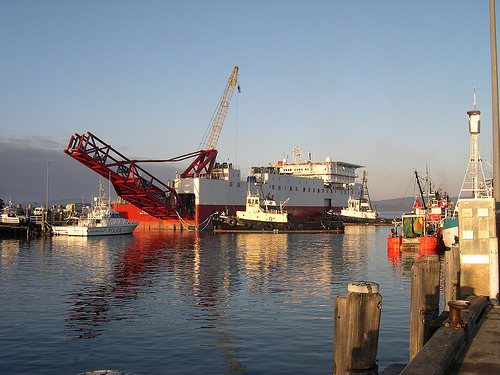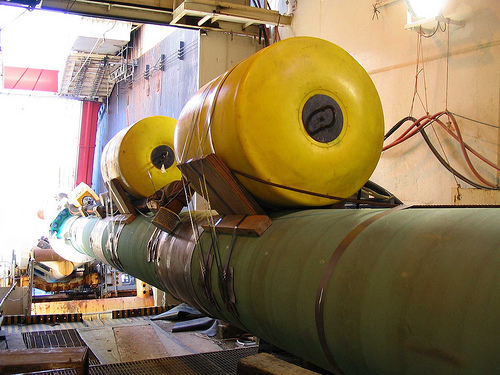Pipelay Vessel Aussie 1 (Source Flickr)
Here is the summary of OIC responsibilities during typical shallow water pipelay operations:
Installing a barge real time electronic positioning system onboard the lay barge and onboard the anchor handling vessel. This is a mandatory requirement to ensure safe operation during anchor running & maneuvering of all marine vessels. All anchor handling operations will be suspended if the system on any of the vessels is not operational.
The work will be executed with an approved anchor patterns and catenaries, together with approved barge, trench vessel, tugs and other vessels movements along the entire length of the job. The barge will be set up in lay mode and in the correct position for start-up of pipelaying and carrying out all preparatory work for installation.
Part of the initial activities is to cut loose and remove all tie-down materials used to secure Pipeline material for transportation and offloading as required to maintain pipelay progress. This activities need to be planned properly to ensure no bottlenecking during pipelay operations.
To maintain high quality production, it is mandatory to remove all foreign matter from bevelled ends and inside of pipe including cleaning with power brush prior to welding, brush and clean all finished welds. This activities will be monitored closely by QA/QC personnel.
Pipeline Buoy (Source Flickr)
The linepipes will be properly handled, align using internal line-up clamps, welding and lowering Pipeline to seabed. All welding works will be inspected by radiographic inspection, UT and all other non-destructive inspections and testings including visual inspection. For all AUT & RT requirements for Pipelines, RT equipments will be inspected & approved by the client. There is a complete laboratory set up on the barge for automatic film processing which also including the dry file viewing facilities.
Part of the pipelay operation, is to carry out a post-installation survey of the cable crossings (if any), span rectification, determining and plotting the final position of these items and identifying all unsupported Pipeline spans. These activities can be done with the main work barge or by other work vessel a few days behind the barge operations. Again, this simultaneous operation require a properly planned schedule.
Bow String Pipeline Start-up
Not to forget; all welded pipe joints will be coated/wrapped and holiday detected and carry out all repairs (should there is any) as necessary for such coating and wrapping.
The pipeline will be cap-off and laid on seabed awaiting for any future spool or PLEM (Pipeline End Manifold) installation.
During laying operation, pipeline profile monitoring by diver and ROV shall be conducted at a minimum frequency of three (3) times per shift. The ROV will also be used for checking of anchor lines over existing pipelines (if any).
Sometimes the client require OIC to install pingers which have a 6 month life period on marker buoys attached to the start-up/ laydown heads to facilitate locating of these heads in future.
A post-lay pre-flood video surveys will be perform to identify an unsupported spans, flowline coating damage areas, etc. and rectify same. Final as-built surveys will be done following hydrotest, dewatering and drying activities.
Source link


Comments
Post a Comment